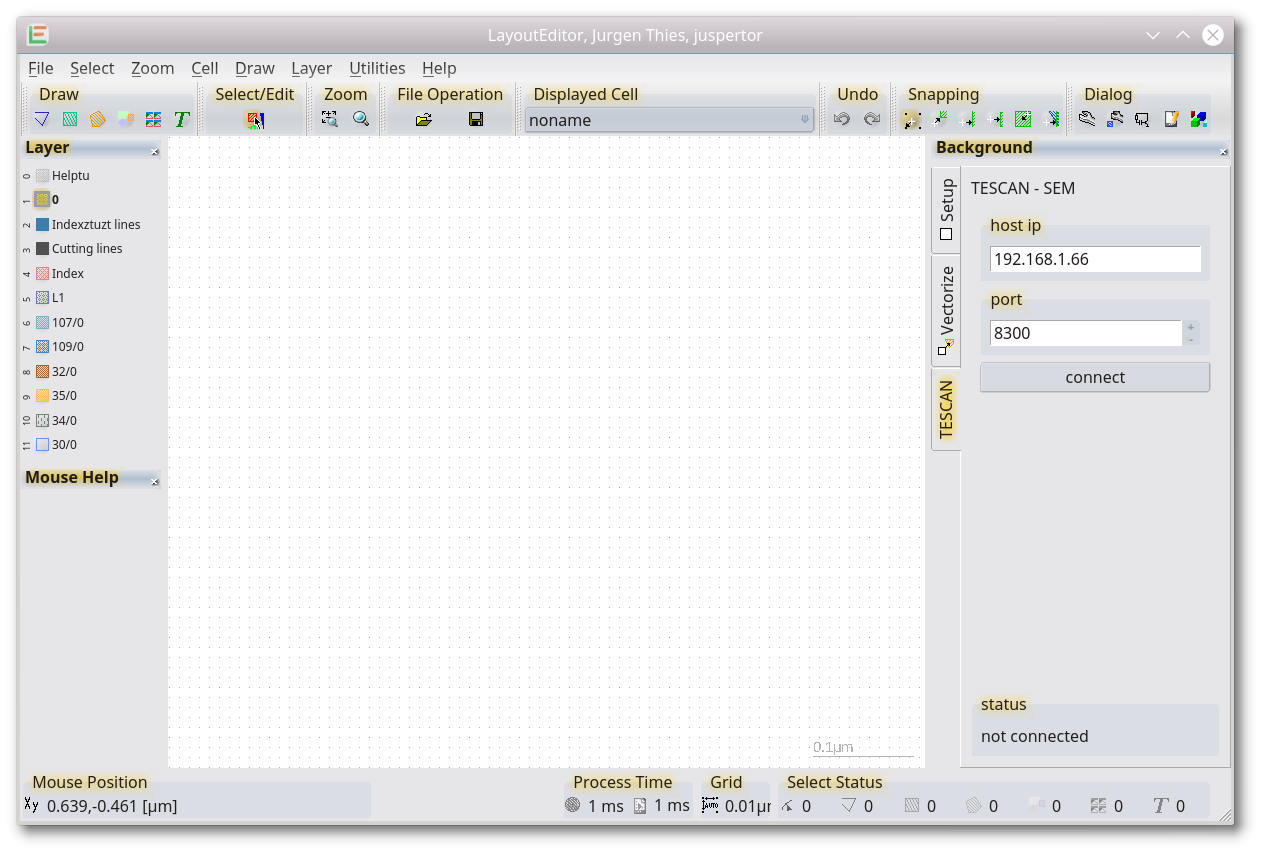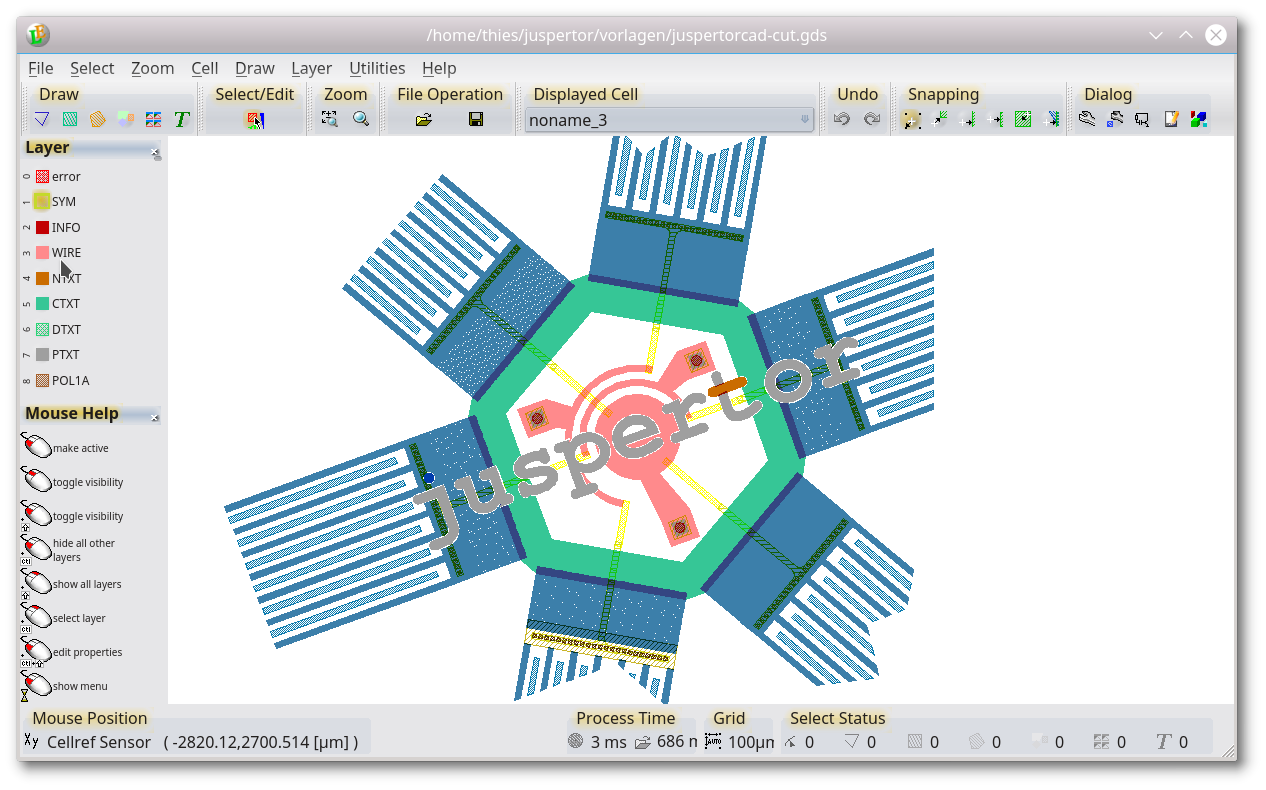
For further setups, please use the SetupDialog. Via the context menu you can also change to view of the layer window itself. Shift+ctrl left click to edit layer properties. Or shift left/middle click to toggle visibility of a layer. The most important mouse functions in the layer control are: As block view or a list view is possible.

The appearance of the layer window can also be controlled via the setup. All setup can (like any other function) also be done via the main menu or the context menu of this sub window. Via this buttons the display of the drawing is controlled. You will get a fine zoom, if the mouse wheel is used together with the Shift key, and a very fine zoom with the Control key. The main menu and/or context menu is opened by a right click in the drawing. But three basic feature are always active: The mouse function depends on the activated mode. But also any menu feature can be called from the drawing part. All graphical editing is done inside this part. The major area of the user interface is used by the drawing. It will start with the most important part of the user interface, the main drawing: The parts of the user interface are described next.
LAYOUTEDITOR USERS WINDOWS
A availability of some tool bars/sub windows depend on the LayoutEditor version you use. Further tool bars, sub windows can be added on demand via the main menu or via a right click in the empty area of the menu bar/tool bar. The default appearance (shown on the right) only includes most important parts. The user interface of the LayoutEditor is highly adjustable. A three button wheel mouse is recommended for a effective use, but it is also possible to use any feature with a touch pad or one button mouse.

Context menus are available for most parts of the user interface by a right mouse click. The most important handling functions like zooming and scrolling are integrated in each feature and need not to be called separately. This is achieved by an extensive use of shortcuts and mouse buttons/keys combination together with clear visibility of this combinations. The Wacom® Intuos Tablet® and the Microsoft® Intellimouse® both provide a layout editor in ‘System Preferences’ on Apple® computers for their keys, buttons, and scrolling.The user interface of the LayoutEditor offers a outstanding usability as well as a high productivity.

This layout editor allows one to change the assignments of specific keys on USB keyboards.
LAYOUTEDITOR USERS SOFTWARE
One example of this type of layout editor is found in the Keyboard Layout Manager™, a software program that allows users to modify the keyboard layout files of various Microsoft® operating systems, including Windows® 7 and Vista®.

Some layout editors change the mapping of buttons and keys in specific computer input devices. Some computers and tablets allow users to modify their keys, buttons, and scrolling. Because layouts appear in many unique and proprietary products, layout editors are also, often, unique and proprietary, and specialized for very particular use. A layout editor is a tool for editing a layout, and may be used in a design stage or as an aftermarket product. An editor is a tool for adjusting, updating, changing, enhancing, or otherwise working with something. Layout is used in a wide variety of user interfaces, from vehicle dashboards to smartphones to software applications, as well as pages - whether real or virtual - and input devices. The term layout refers to how something is arranged in a given space.


 0 kommentar(er)
0 kommentar(er)
